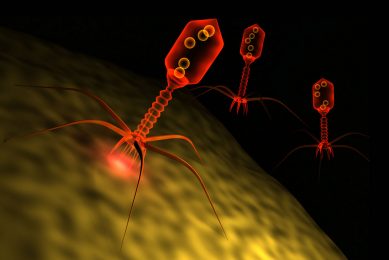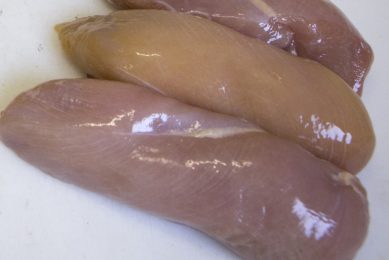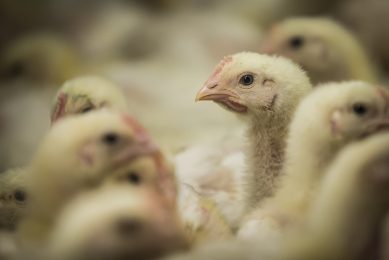New technology detects and deters diseases

Pathogens such as viruses and parasites continue to cause economic hardship for the poultry industry. Agricultural Research Service (ARS) scientists are finding new ways to identify pathogens and are developing innovative methods to control them.
In Maryland, researchers are developing hyperimmune egg yolk antibodies to boost the immune system of young chicks against infectious diseases. Enteric or intestinal diseases such as runting-stunting syndrome, poult enteritis mortality syndrome, and poult enteritis complex are a major concern of poultry producers worldwide.
The same is true for coccidiosis, a devastating disease caused by intestinal parasites. Coccidiosis costs the poultry industry more than $600 million annually in the United States and $3 billion worldwide.
Finding Novel Viruses in the Mix
At the ARS Southeast Poultry Research Laboratory (SEPRL) in Athens, Georgia, scientists have stepped up their efforts in fighting diseases that cause diarrhoea, decreased weight and mortality in poultry. A number of viruses are believed to be responsible for intestinal diseases, but a single agent has not been identified.
A powerful technology called metagenomics is being used by microbiologist Michael Day and research leader Laszlo Zsak at SEPRL’s Endemic Poultry Viral Diseases Research Unit to confirm and unearth viruses. The technique is different than traditional sequencing that characterises genes in a single organism. Metagenomics detects the nucleic acid-RNA and DNA-of thousands of organisms in an entire community.
Collaborating with veterinarians and poultry producers, Day and Zsak collected intestinal samples from several turkey flocks affected by enteric disease. They then used metagenomics to uncover vast amounts of viruses from the samples.
An analysis of the sample showed that the intestinal virus metagenome contained thousands of pieces of nucleic acid representing many groups of previously known and unknown turkey viruses. Scientists confirmed common avian viruses such as rotavirus, astrovirus and reovirus. They also detected many RNA viruses, such as members of the Picornaviridae family.
By using metagenomics, scientists were able to generate and continue to analyze additional data from the samples. They discovered a new bacteriophage that had never been described in turkey intestinal samples.
“The bacteriophage is called phiCA82,” Zsak says. “It belongs to a group known as microphages and is the type of virus that naturally kills bacteria. Phages are important because they can potentially be used as alternatives to antibiotics and as weapons against multi-drug-resistant pathogens.”
Future studies will be done to determine if phages like this one actually kill the bacteria they infect, Zsak says. Once this process is identified, scientists can design identical ways to kill dangerous pathogens.
“Egging On” Poultry Diseases
A different type of technology is being used to prevent coccidiosis and other enteric diseases in poultry at the ARS Henry A. Wallace Beltsville Agricultural Research Center (BARC) in Beltsville, Md.
Avian immunologist Hyun Lillehoj partnered with scientists at universities and industry to develop a passive immunisation strategy to control poultry diseases. The novel, antibiotic-free technology uses hyperimmune egg yolk antibodies to enhance the immune capability of newly hatched chicks.
“By controlling coccidiosis, you’re also reducing the impact of this disease on other enteric pathogens,” says Lillehoj, who works in BARC’s Animal Parasitic Diseases Laboratory. “For example, this method could be used to control the bacterial pathogens that cause necrotic enteritis, a prevalent gut disease of poultry.”
Live vaccinations and good management practices help reduce the spread of disease in poultry. The new method offers producers an antibiotic-free alternative in controlling drug-resistant strains of the disease.
These birds possess strong immunity due to an abundance of antibodies against the pathogen-causing intestinal disease, she explains. The egg yolk is spray-dried, mixed with feed and given to chicks that have no immune protection right after hatching.
In one experiment, one-day-old chicks were given feed mixed with spray-dried egg yolk powder prepared from hyperimmunised hens. The chicks were then challenged with a coccidia infection.
Thanks to this research, a product is now available from a commercial company to help control coccidiosis. Similar approaches are being applied to control other poultry enteric diseases.
Related website: USDA













